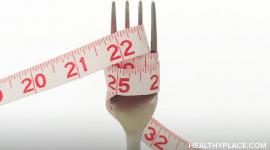About the Eating Attitudes Test

The Eating Attitudes Test (EAT-26) was the screening instrument used in the 1998 National Eating Disorders Screening Program. The EAT-26 is probably the most widely used standardized measure of concerns and symptoms characteristic of eating disorders.
The EAT-26 alone does not yield a specific diagnosis of an eating disorder. Neither the EAT-26, nor any other screening instrument, has been established as highly efficient as the sole means for identifying eating disorders. However, studies have shown that the EAT-26 can be an efficient screening instrument as part of a two-stage screening process in which those who score at or above a cut-off score of 20 are referred for a diagnostic interview.
Surveys of adolescents or young adult women indicate that about 15% score at or above 20 on the EAT-26. Interviews of those who score below 20 on the EAT-26 show that the test produces very few false negatives (i.e. those with low EAT-26 scores who have eating disorders or serious eating concerns on being interviewed).
Based on follow-up interviews of 720 people who took the EAT-26, high scorers were divided into 6 groups:
- Eating Disorders: persons who met strict diagnostic criteria;
- Partial Syndrome: persons who report marked dietary restriction, weight preoccupation, binge eating, vomiting, and other symptoms of clinical significance, but who fail to meet all of the diagnostic criteria for an eating disorder;
- Obsessive Dieters or "weight-preoccupied" individuals: persons who express significant concerns about weight and shape, but who do not present the clinical concerns of those with the "partial syndrome";
- Normal Dieters: persons who are actively trying to lose weight, but who show no evidence of "morbid" or obsessive concern about weight or shape;
- Obese Individuals
- Disturbed Individuals: persons who respond positively on the EAT-26, but who do not have significant concerns about weight or shape on interview.
Of those who scored above 20 on the EAT-26, a third had clinically significant eating concerns or weight preoccupations. In a follow-up of high scorers 12-18 months later, 20% of those who initially had a "partial syndrome" now met diagnostic criteria for an eating disorder. Moreover, more than 30% of the initial "normal dieters" became "obsessive dieters."
Given these findings, if you score above 20 on the EAT-26, please contact your doctor or an eating disorders treatment specialist for a follow-up evaluation.
APA Reference
Tracy, N.
(2022, January 4). About the Eating Attitudes Test, HealthyPlace. Retrieved
on 2024, April 23 from https://www.healthyplace.com/eating-disorders/eating-disorders-overview/about-the-eating-attitudes-test


